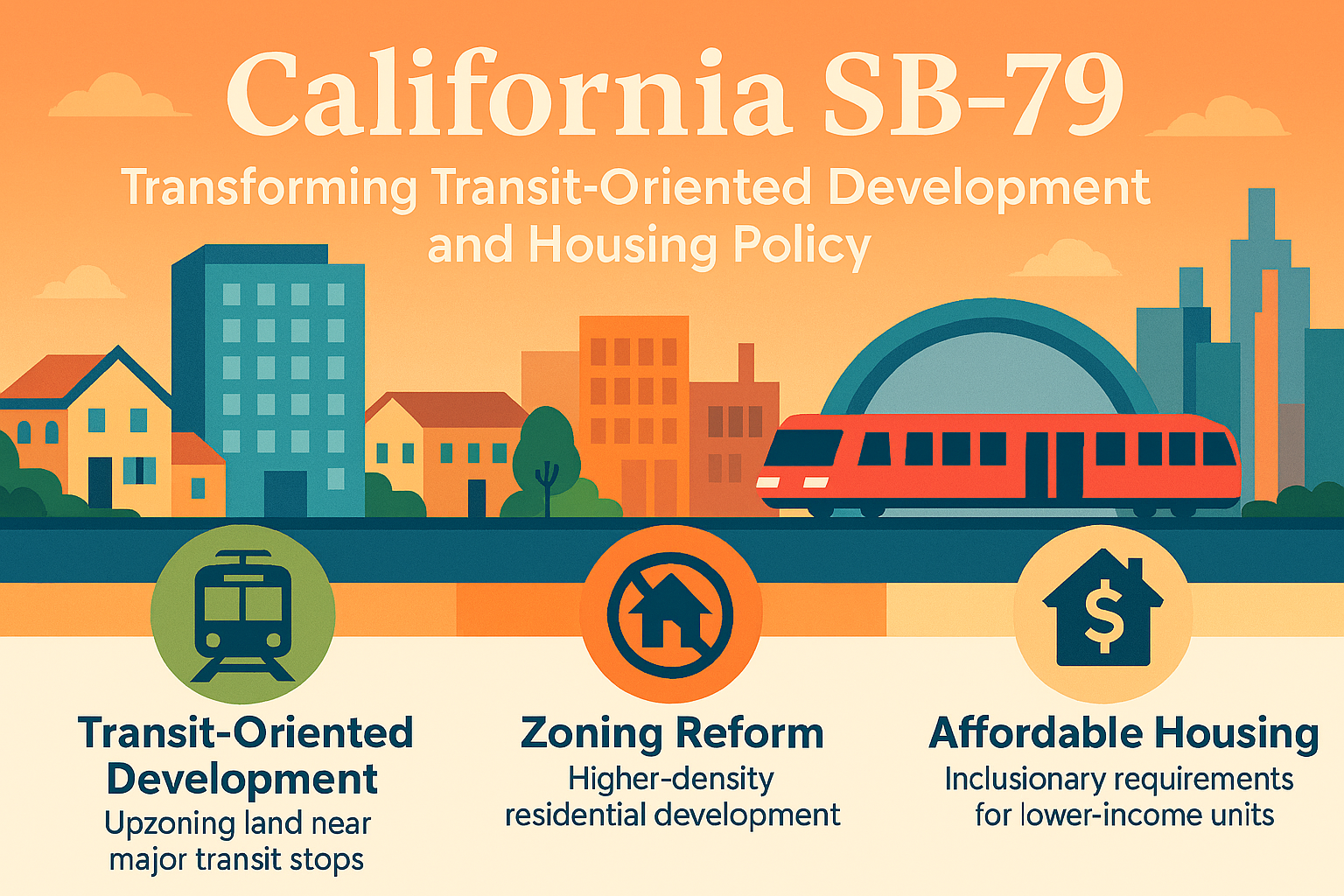Summary
SB-79 overrides local zoning restrictions to allow higher-density residential development within ½ mile of qualifying transit stops in urban counties. These include areas served by BART, Caltrain, LA Metro, Sacramento Regional Transit, and other central rail and bus rapid transit systems.
Key objectives:
- Increase housing supply near job centers and transit hubs.
- Reduce car dependency and greenhouse gas emissions.
- Support financially strained transit agencies by enabling development on their land.
Key Provisions
· Eliminates Single-Family Zoning Near Transit
Within ½ mile of qualifying transit stops, SB-79 imposes state-mandated minimum density requirements, effectively ending single-family zoning in these areas.
· Height and Density Allowances
o Tiered by proximity and transit type:
§ Tier 1 (heavy rail, high-frequency commuter rail): Up to ~ nine stories.
§ Tier 2 (light rail, bus rapid transit): Lower but significant allowances.
· Affordable Housing Requirements
Projects with more than 10 units must include:
o 7% extremely low-income units, or
o 10% very low-income units, or
o 13% lower-income units.
· Labor Standards
Buildings exceeding 85 feet in height must comply with prevailing wage and skilled workforce requirements.
· Transit Agency Land Development
Transit agencies can develop the land they own, creating new revenue streams.
· Implementation Timeline
o Effective 1 July 2026, unless local agencies adopt approved TOD plans earlier.
o Does not apply to unincorporated areas until the 7th RHNA cycle.
Impact on Real Estate and Communities
- Development Surge: Expect a wave of mid-rise and high-rise projects near transit hubs in counties like Los Angeles, San Francisco, Santa Clara, Alameda, San Diego, and Orange.
- Neighborhood Transformation: Single-family neighborhoods near transit will experience increased density, traffic, and infrastructure strain unless parallel investments are made.
- Investor Opportunities: SB-79 presents prime opportunities for developers to capitalize on state zoning standards and density bonuses.
- Local Resistance: Cities may adopt alternative TOD plans or carve-outs for fire hazard zones and historic districts, slowing implementation.
Why It Matters
California faces a housing shortage of millions of units and soaring costs—median home prices near $900,000 and rents over $2,600/month. SB-79 represents a bold attempt to address these issues by concentrating on growth in sustainable, transit-accessible locations.
Criticism and Concerns
- Local Control: Opponents argue that SB-79 strips cities of planning authority and imposes a one-size-fits-all approach.
- Infrastructure Strain: Increased density may overwhelm roads, schools, and utilities without parallel upgrades.
- Wildfire Zones: Critics Warn About Risks in High-Fire Areas and Displacement Concerns.
Resources
